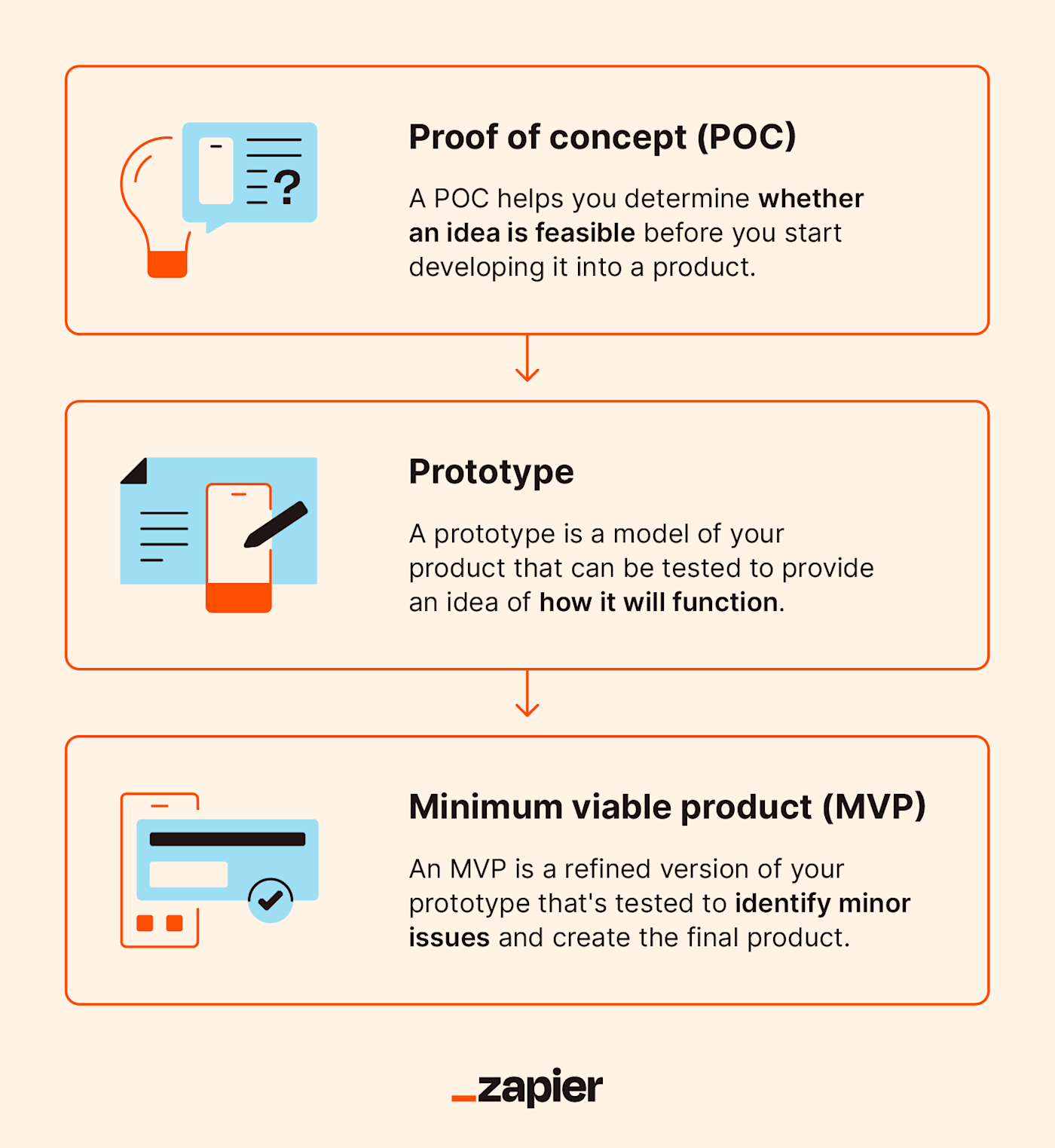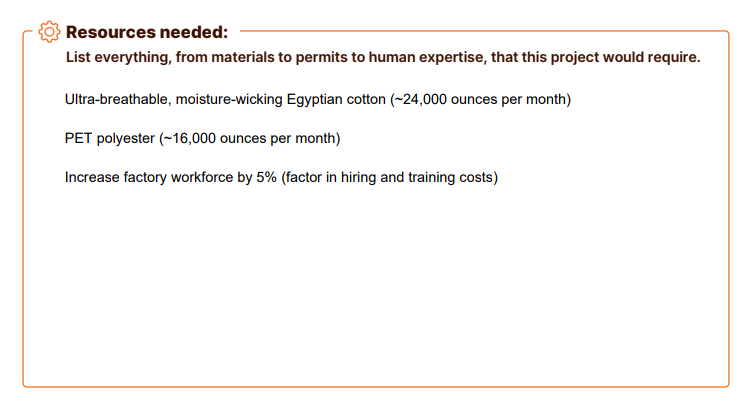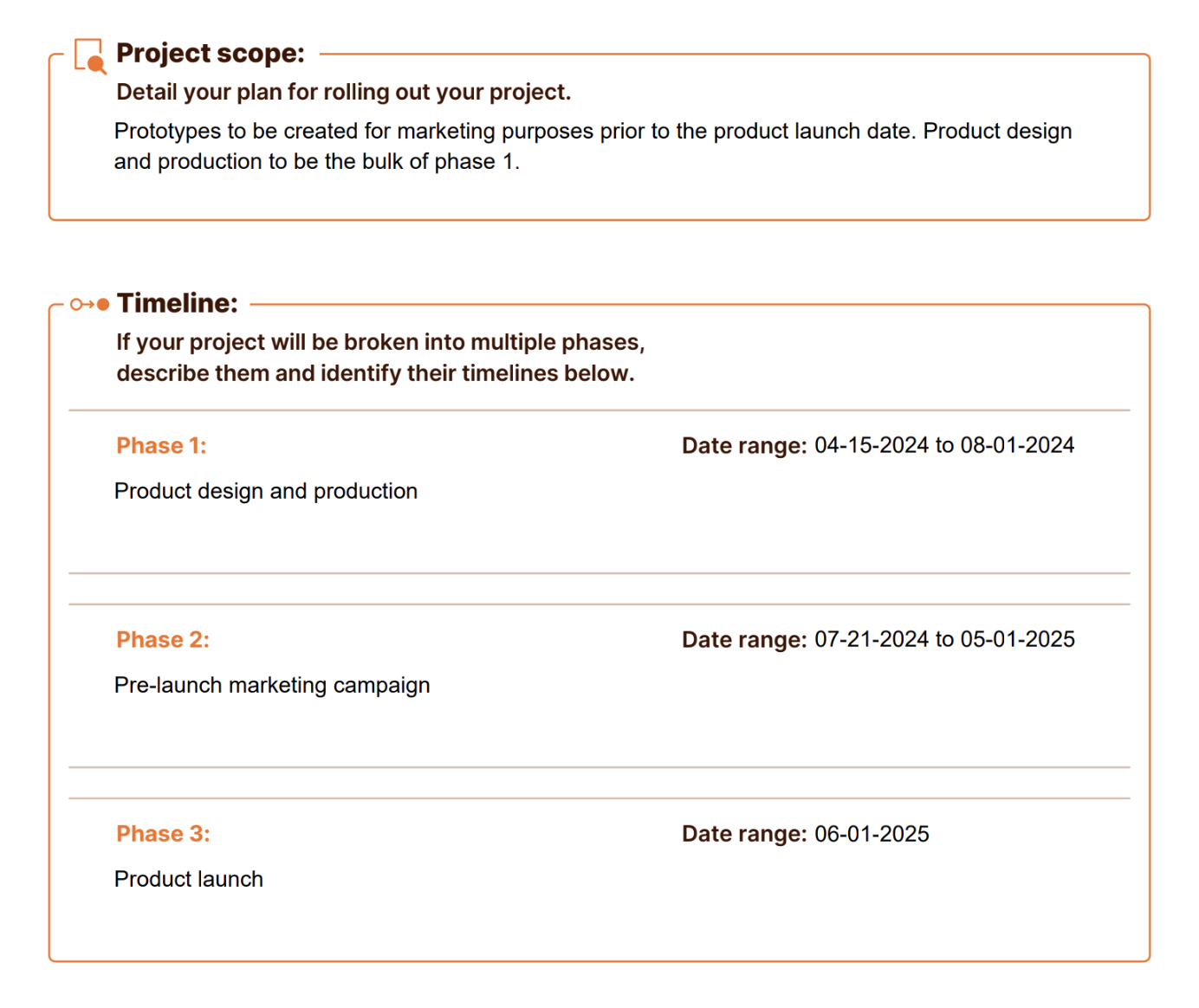I have a friend who describes himself as an "ideas guy." He regularly proposes grandiose business initiatives, solutions to global issues, and creative ideas for novels. And I can't lie—I often find myself leaning forward with wide eyes, like a kid listening to a ghost story at camp.
The catch? There's rarely a plan.
While it's fine to brainstorm creative ideas with friends and not have a plan of attack, it's less viable in a corporate context when big bucks are on the line. That's where a proof of concept comes in—the first step in bringing an idea to life.
To help you (and your ideas guy), I've put together a quick guide to writing a proof of concept with a template that shows you what you're working toward.
Table of contents:
What is a proof of concept (POC)?
A proof of concept (POC) is the process of proving that an idea is feasible. It's a screening phase to decide whether the idea can and should be brought to life. A POC may very well reveal that a great-on-paper proposal doesn't have legs to stand on, in which case it should be revised or trashed. It's similar to a painted door test, which can shed light on the popularity of an idea.
What is a POC used for?
Let's say your ideas guy comes to you with a new plan for a business, product, or general scheme to make money. You and your investors will want to know if this idea is realistic and feasible.
A POC does just that—it proves that the concept is valid and feasible given different factors like timing, market conditions, and cost of development. POCs are used across industries and departments, but they're most valuable in areas like IT, health care, and product development since innovation in those fields is often very expensive.
Why a proof of concept is valuable

There's no worse feeling than looking back on hours of work to realize that they've been for nothing. Proofs of concept aim to prevent this from happening. Here's why you shouldn't skip this step when building out an idea:
Prevents resource waste: Most projects demand a lot of resources—both tangible, like money and materials, and intangible, like time and energy. If you dive into a project—such as a new product launch—before proving it can be done, there's a decent chance it'll end up flopping and costing you big time.
Informs investors: Investors are excellent judges of risk and reward. If your POC proves that your idea is likely to succeed, it's much more likely to attract support from investors than if it were left untested.
Helps you get ahead: A POC is about being proactive and forward-thinking. It forces you to consider logistics in advance, making your job easier when you move onto later stages of development.
Identifies roadblocks: Even if an idea proves viable, it may be difficult to execute. For example, a POC for a new device might uncover logistical barriers to manufacturing it at scale, which could impact the organization's decision to go through with it.
Proof of concept vs. prototype vs. minimum viable product (MVP)

Chances are, you've heard the term "prototype" used more colloquially than "proof of concept." They're often used interchangeably, though they're completely different stages of an idea's evolution.
A proof of concept's only purpose is to show whether you can reasonably create a product.
A prototype is a model of the product that follows POC approval. It's usually staged in the real world as opposed to a controlled setting to determine how the product would actually perform.
A minimum viable product (MVP) goes a step further—it's an advanced prototype that contains all of the basic features a user would need to use a product. It likely has some issues that need to be worked out, but it provides a solid idea of what it would be like to use the end product.
What to include in a proof of concept
A POC should always include the following elements to help the reader quickly identify everything they need to know about a project:
Project or product name: This section introduces the idea to your readers. It can be your intended brand name or product name. It can also be a simple phrase that describes the product in the absence of any branding.
The problem: This section should clarify what the product will achieve or the problem it solves. Keep this to two or three sentences, and be as clear and direct as possible.
Target audience: Investors, stakeholders, and even your own team members want to know that someone out there will want or need to buy your product. Displaying your insights into the target audience shows your market knowledge and helps reassure reader concerns.
Resources needed: This section should list everything you need to make your project happen—anything from funding to physical assets. Make sure this section is very detailed, so investors and stakeholders know exactly where funding is going rather than wonder if you're out buying brand-new Macs for the team.
Success criteria/KPIs: You want your readers to understand how you assess success and progress. It shows expertise, builds trust with potential partners, and gives investors a roadmap to look forward to.
Project scope: This is your plan for how you'll approach your project's stages. This section should show readers whether you're soft launching the product, planning to launch a pre-release marketing campaign, or preparing the market for your release.
Timeline: Create a project timeline, not just for third parties and investors but for the development team as well. Outline how long each phase will take and the order in which you'll kick them off to make your project digestible. It helps developers organize their schedules accordingly and prevents investors from developing unreasonable project timeline expectations.
How to write a proof of concept (4 steps)
As with any business proposal you'd show to executives and investors, there's a method to developing a proof of concept. Check all of the following boxes as you write yours.
Step 1: Describe what problem you're trying to solve (and for whom)
Investors aren't going to funnel money into a project that doesn't solve a specific problem for a specific market. To determine your market's pain points, don't just trust your gut—collect data directly from the people you aim to serve. For example, you could conduct a focus group or set of interviews with people in your market to confirm that your idea would serve them well.

Step 2: Provide a list of the resources you'll need to complete it
It takes a lot of tangible and intangible resources to create a new product (especially at scale). Create a comprehensive list of everything you need to roll it out. Apart from obvious resources like materials and machines, be mindful of commonly overlooked items like time spent on research and sourcing external expertise.

Step 3: Specify success criteria/metrics
Before you draw any conclusions about your POC, you have to set specific criteria for success and/or failure. If you're designing a product for a client, you'll want to ask them what their criteria are. If not, conduct your own research and determine them yourself. For example, if you have an idea for a new hair product, you may set specific thresholds for material sourcing cost, manufacturing time, and time you would need to devote to marketing.
You may be tempted to set generous standards to help your idea look good, but doing so can easily backfire. The last thing you want is to move forward with an idea that eats up company time and resources without the payoff.

Step 4: Set a scope and timeline
To what extent do you expect to scale your project, and how quickly do you plan to do so? Maybe you'll initially release the new product in one locale or country, measure its success, then scale it further over time. Or maybe you'll lose no time and execute a full launch all at once. Include these details in your POC to inform investors and executives of your pacing.
Once you've finished your POC, you can move forward with building a prototype, testing it on members of your target audience, and collecting and implementing their feedback as you develop your MVP.

Proof of concept template
In the case that your ideas guy just happens to be the colleague who'll be in charge of writing your proof of concept, refer them to the following section for an excellent starting point. Zapier's POC template includes everything they'll need to expedite the process of validating the project.

3 proof of concept examples
Looking for a little more guidance on approaching POCs? No problem—here are some examples of what a POC might look like in a few different industries.
Clothing retail
A clothing company might have an idea for a new line of breathable sweatpants. Its POC may identify 40-to-60-year-old athletes as its target market after fielding a survey revealing that this cohort gets uncomfortable exercising in traditional sweatpants during winter months.
It might also list the resources needed to manufacture these sweatpants, the logistics for securing those materials and producing the sweatpants, and a plan for releasing them to the public. It should ultimately show whether the product is on track to meet KPIs, such as a predetermined profit margin.
Software
A software company might have an idea for a new project management app and identify startups and small businesses as its target market. It should also describe why there's an unmet need for project management tools among small businesses.
The POC would need to describe a timeline for developing the software, whether new tools are needed to create it, and whether the company has enough internal expertise to make it happen (among other considerations).
Restaurant
A parent company that owns several restaurant chains might have an idea to open a new seafood restaurant affordable to lower-middle-class families. The POC would have a lot of ground to cover, including logistics for location, permitting, construction, sourcing food and decor, and more.
It might include a plan to start small, with a food truck or stand at local fairs, before building the first restaurant in a coastal city. It should also address whether it could become profitable within a reasonable time frame.
Automate your way to launch: Future-proofing your proof of concept
Now that you have everything you need to write a POC, it's time to verify your creative ideas. As you move toward prototyping, use no-code tools like Zapier to build out your ideas and automate the critical workflows.
Related reading:
This article was originally published inDecember 2022. The most recent update was in May 2024.






